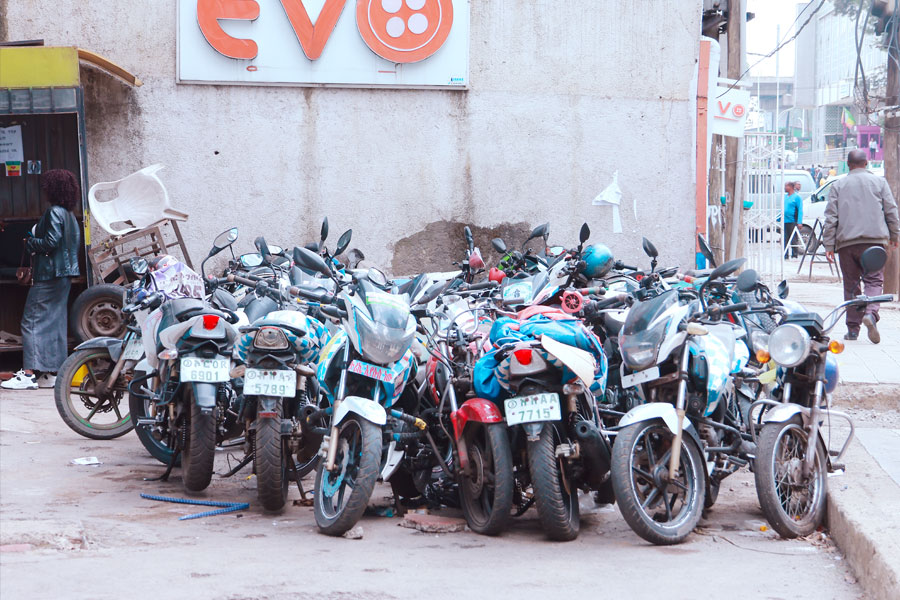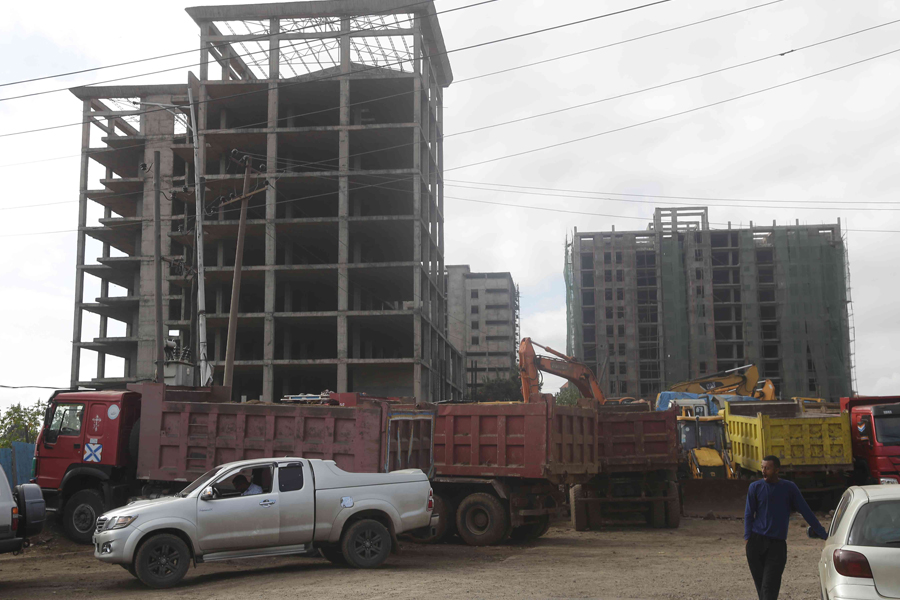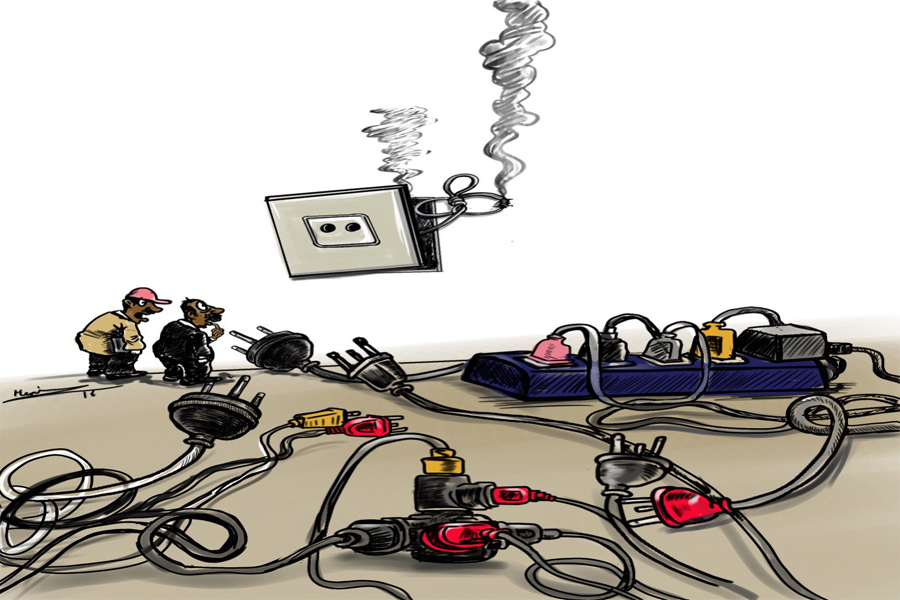
I relish the smell of freshly brewed black coffee alongside breakfast to start off my day using one of the large-sized mugs from my collection. One, in particular, had sentimental value as it was gifted to me by a friend from Hong Kong, China over a decade ago.
It is intriguing how something as simple as a porcelain mug can become part of a daily routine and add a touch of aesthetic value to life. When it was broken, I pieced it together and add a touch of aesthetic value to life. When it was broken, I pieced it together and posted a tribute on my Facebook page.
Coffee enthusiasts may share the sentiment, particularly with the mugs that come bearing unique designs. I have seen some antique pieces displayed at one of my favourite coffee joints in Addis Abeba.
A quote by the French writer Honore de Balzac “When you drink a cup of coffee, ideas come in marching like the army,” reads a placard chained to an old meshed box on the ceiling of Tomoca coffee shop on Churchill Road.
Outside the door, an actual coffee tree blossoms laden with green beans that will ripen when the season is right. The tree is a living embodiment of the coffee shop's theme, like the punchline of a good joke. It is a reminder that coffee is not just a drink, but a crop that is grown and harvested with care.
I visit the place once in a while not only to savour its aromatic brew but also to bask in its historic atmosphere. The walls are adorned with samples of coffee beans from all over the world, old coffee brewing machines that have stood the test of time, and photos of rural girls harvesting coffee beans in the harshest of conditions.
The antique pieces displayed there showcase priceless relics representing the unremitting impact of world coffee culture that knows no bounds.
On one side of the wall, a narration unfolds with a legend of a young goatherder who discovered a coffee bean that made his herd behave strangely when they tasted it presumed to be in the Kaffa Zone of Western Ethiopia. He showed the peculiar bean to his master, who decided to experiment with roasting it; the first time that the aroma of coffee was discovered.
The bean soon became very popular and was traded as a lucrative commodity, transported by caravans of camels to the Red Sea ports. Eventually, coffee found its way onto merchant ships bound for Arabia and beyond, leading to its global popularity.
The Coffee Arabica known for its high caffeine content of 12mg per gram grows in small shrubs in the Ethiopian highlands although susceptible to crop diseases.
The less popular species such as Coffee Robusta, Liberica and Exelsa are sold at a relatively affordable price while proving to be more disease resistant and grow much taller with less caffeine content.
Coffee has become a common household item available on street corners on all continents. Large multinational corporations like Nescafe and popular coffee chains like Starbucks have made instant coffee widely available. However, the instant coffee served in these chains and convenience stores cannot compare to the authentic organic ones.
It is astounding to see the exorbitant cost of organic coffee in the global market, with some speciality brands reaching a staggering 55 pounds sterling.
In an article I wrote for the now-defunct Addis Tribune newspaper in 2002, entitled "The Coffee Ordeal," I discussed coffee prices at that time. Ironically, coffee prices dropped to record lows, with a kilo selling for three to four Birr on the streets of Addis Abeba during that period.
The drastic drop in prices for this essential cash crop that earned hard currency back in 2006 is in stark contrast to today's reality, where prices have skyrocketed by hundred folds. I recently read a story contradicting my then article, depicting a much better outlook and advancement.
The unique features of Ethiopian coffee struck a thought of a program I saw years ago about a distinctive and costly coffee delicacy in Southeast Asia that can fetch prices as high as 1,000 dollars per kilogram.
It is known as Kopi Luwak or Civet Coffee, with a phenomenal origin from coffee beans that have been partially digested by Civets (small, slender mammals) that are native to tropical forests in Asia and Africa.
The process of the coffee cherries passing through their intestines is said to enhance the flavour and make it highly coveted while it is extracted from their faeces.
Some may have reservations about consuming coffee that has been filtered through Civet intestinal juices. But a single cup costs anywhere from 30 to 100 dollars, making it a luxury for only the most privileged.
The debate over Kopi Luwak is a complex one. It is a delicious and sought-after coffee that many enjoy, while there are ethical concerns about animal rights.
However, it is a shining example of the lengths to which humans will go to satisfy their cravings. While many may find the concept distasteful, it is a multi-billion dollar industry and source of livelihood for the farmers who raise these animals, feeds them coffee cherries, and collect their droppings to sell.
Civets are also found in Ethiopia known as Tirign in Amharic. They produce a perfume-like, widely sought excretion known as Zibad. This little mammal is a distant cousin to the Asian civet, responsible for Kopi Luak, and there seems to be a striking resemblance in how the intestinal juices seem to do wonders.
The reality is indeed stranger than fiction, and mankind has become obsessed with this animal and its droppings.
After extensive research by leading zoologists Tadese Habtamu (PhD) and Abebe Getahun (Prof), Kopi Luwak was successfully produced in Ethiopia from Tirign, using the much-coveted Ethiopian Coffee Arabica to produce high-quality Kopi Luwak.
The findings were presented at the annual conference on coffee production organized by The Biological Society of Ethiopia in March 2014 and were later published in the quarterly "African Journal Of Ecology" in 2017.
The publication asserts the lucrative potential for foreign currency earnings from Kopi Luwak and the ideal conditions for production in Ethiopia. Perhaps it will come as a blessing in disguise for the significant workforce as coffee is the number one foreign currency earner extensively cultivated in the Western, Southern and Eastern parts of the country.
Regardless of the varying elements, coffee is a popular national pastime where people socialize, relax, and have hearty discourse on current affairs alongside light-scented incense, creating an enchanting smoky aura.
The elaborate ceremony involves roasting, pounding, and brewing up to three times, encouraging conversation. The practice reflects the nation's long-standing connection to group therapy. It has a captivating and restorative effect on the soul that appears to be a universal unifier as I observed expats enthralled by the atmosphere.
PUBLISHED ON
Aug 12,2023 [ VOL
24 , NO
1215]


Fortune News | Mar 09,2024

My Opinion | Apr 22,2023

News Analysis | May 25,2024

Radar | Jan 16,2024

Radar | May 02,2020

Jul 13 , 2024 . By AKSAH ITALO
Investors who rely on tractors, trucks, and field vehicles for commuting, transportin...

Jul 13 , 2024 . By MUNIR SHEMSU
The cracks in Ethiopia's higher education system were laid bare during a synthesis re...

Jul 13 , 2024 . By AKSAH ITALO
Construction authorities have unveiled a price adjustment implementation manual for s...

Jul 13 , 2024
The banking industry is experiencing a transformative period under the oversight of N...

Jul 20 , 2024
In a volatile economic environment, sudden policy reversals leave businesses reeling...

Jul 13 , 2024
Policymakers are walking a tightrope, struggling to generate growth and create millio...

Jul 7 , 2024
The federal budget has crossed a symbolic threshold, approaching the one trillion Bir...

Jun 29 , 2024
In a spirited bid for autonomy, the National Bank of Ethiopia (NBE), under its younge...